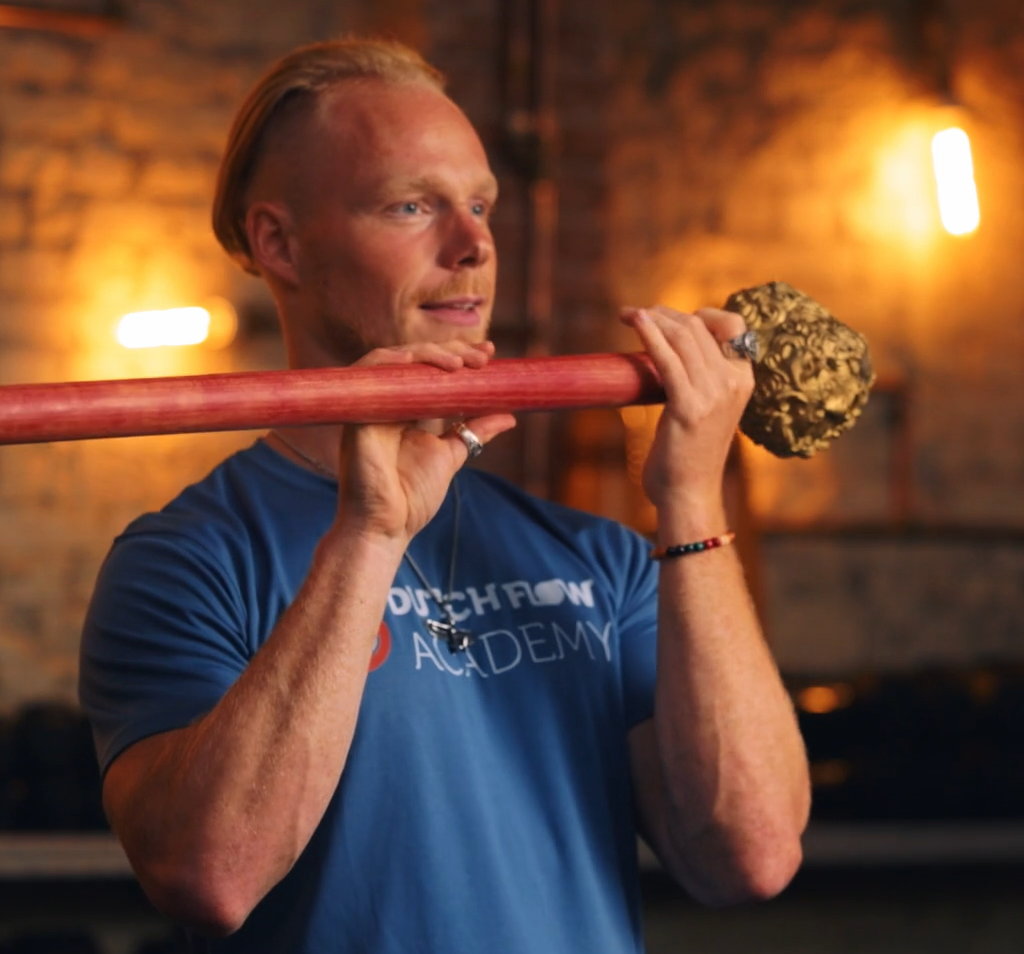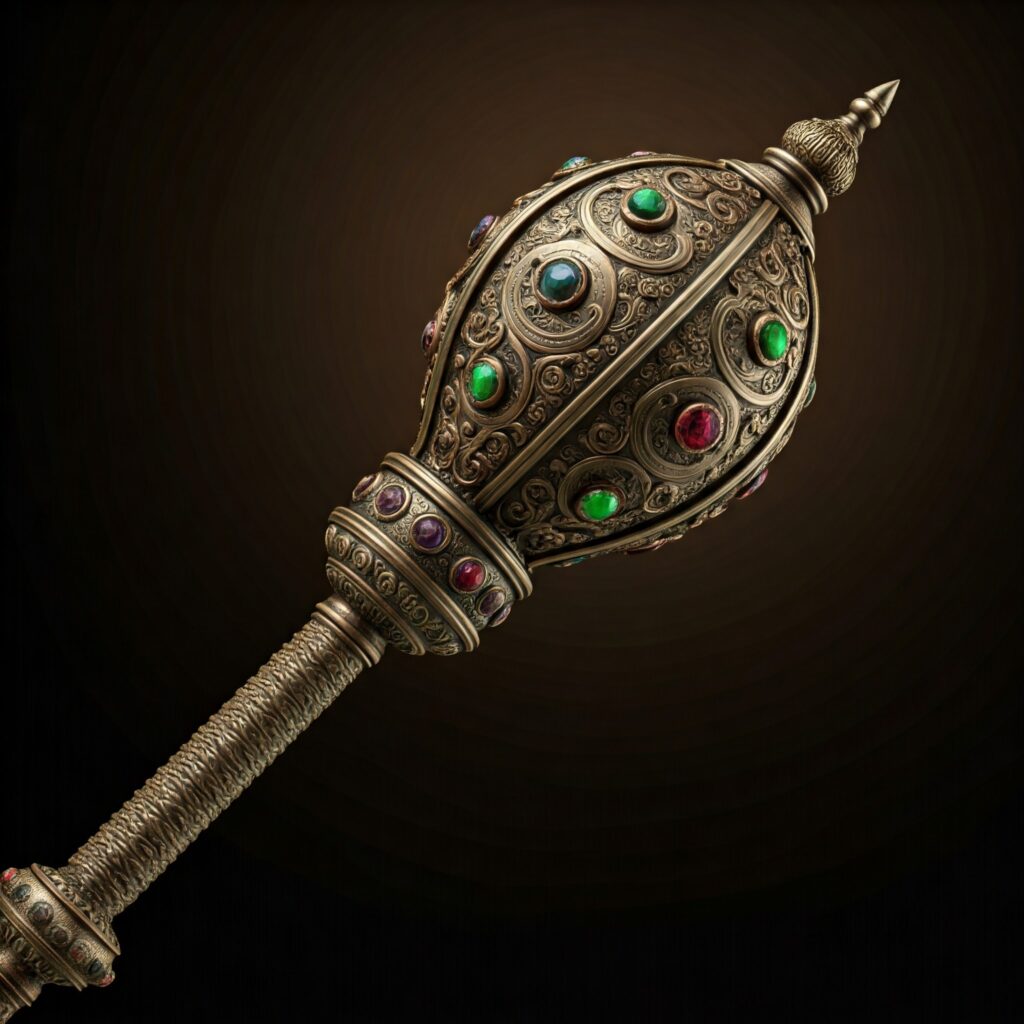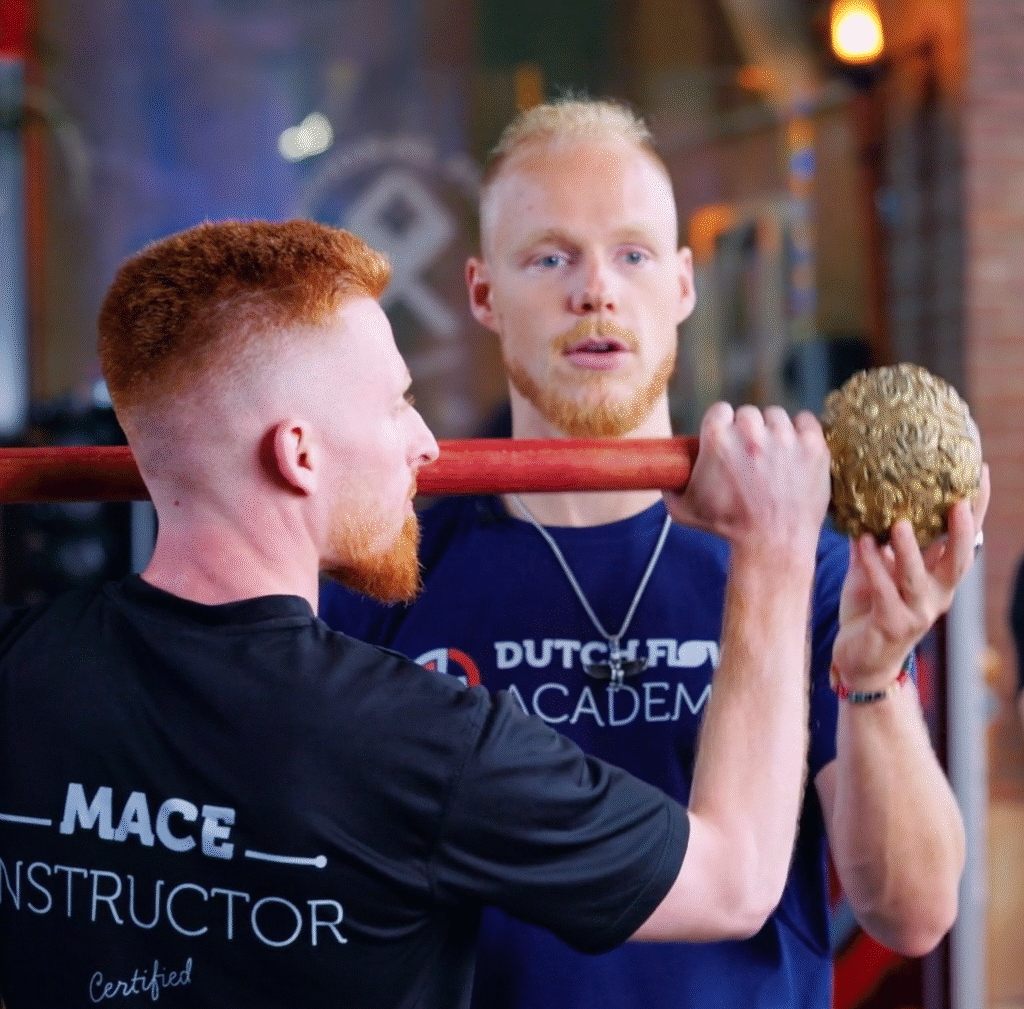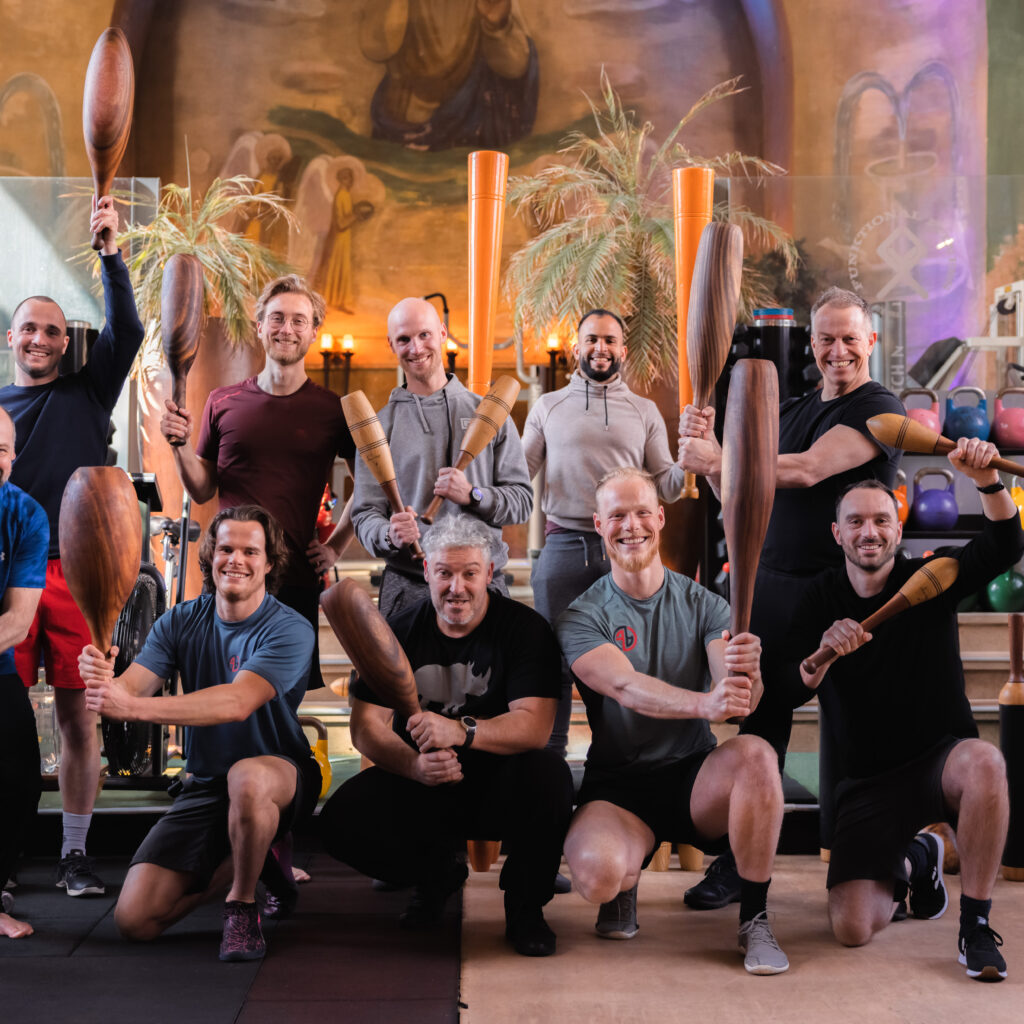Seriously? You Don’t Know What is Mace Flow?

Mace Flow is not just an exercise—it’s a movement revolution. Imagine a workout that blends strength, coordination, endurance, and creativity into a single dynamic practice. That’s exactly what Mace Flow offers.
But here’s the thing: most people still don’t know about it. While traditional workouts focus on static lifts and repetitive motions, Mace Flow encourages fluidity, grace, and full-body engagement, helping you unlock strength and mobility in ways you never thought possible.
If you’re tired of the same old gym routines and looking for something that improves your athleticism, challenges your coordination, and keeps your workouts engaging, then Mace Flow is for you. This guide will take you through everything you need to know, from the beginner’s basics to advanced mace flow techniques, the best workouts, common mistakes to avoid, and why elite athletes, martial artists, and movement enthusiasts swear by this training.
What Is Mace Flow? The Foundation of Fluid Strength
Mace Flow is a combination of strength training and fluid movement patterns using a steel mace (or gada). Unlike traditional gym exercises, where movements are often linear and rigid, Mace Flow involves circular, rotational movements that enhance mobility, endurance, and coordination.
Unlike kettlebells or dumbbells, a mace has an uneven weight distribution (with most of the weight at one end). This forces your stabilizer muscles to work harder, increasing core strength, grip endurance, and shoulder mobility.
How Mace Flow Works
- Movements flow seamlessly from one to the next.
- Exercises are not just about strength but also balance, coordination, and control.
- Movements can be slow and controlled (for mobility) or fast and powerful (for endurance and explosiveness).
- The mace acts as an extension of your body, developing a deep mind-muscle connection.
How Mace Flow Differs from Traditional Workouts
| Feature | Traditional Workouts |
Mace Flow |
| Movement Style | Linear & repetitive | Fluid & dynamic |
| Focus | Strength & muscle mass | Strength, endurance, mobility |
| Muscle Engagement | Isolated movements | Full-body, functional strength |
| Coordination | Limited | Highly developed |
| Risk of Injury | Higher with improper form | Lower with proper technique |
| Creativity & Fun | Minimal | High |
Ancient Origin Of Mace Training
The origins of mace training can be traced back to ancient India and Persia, where warriors and wrestlers used heavy wooden and metal maces to prepare for combat. Unlike modern weights that distribute mass evenly, the mace’s uneven weight distribution required exceptional core stability, grip endurance, and rotational strength—qualities essential for battle.
One of the earliest recorded references to mace training comes from Hindu and Persian texts, where the gada (mace) was used as a warrior’s training tool. The Hindu epic Mahabharata describes mace combat techniques used by legendary warriors like Bhima, Duryodhana, and Hanuman. These warriors relied on the gada for both battle readiness and physical conditioning.
The Persian warriors, particularly the Pahlavans (elite wrestlers), also adopted the mace (known as meel in Persia) as a crucial part of their training. Their goal was to develop powerful, resilient bodies capable of enduring long battles.
Mace Training in Central Asia & the Mongols
The Mongols, known for their brutal warfare tactics and unparalleled horse-riding skills, also integrated mace training into their physical conditioning. Mongol warriors were expected to wield heavy weapons, including maces, hammers, and clubs, to crush opponents on the battlefield.
Their strength-training methods prioritized functional strength, which is why mace training was a crucial part of their regimen.
Roman Gladiators & The Club Training System
The Roman Empire had a similar approach to strength training. While swords, shields, and spears were primary weapons, Roman soldiers and gladiators also trained with weighted clubs and maces to improve:
- Combat stamina
- Rotational strength for sword fighting
- Core stability for maintaining balance in battle
Gladiators in Rome’s Colosseum trained with weighted clubs similar to Indian and Persian maces, proving that mace-style training was a common strength-building method across multiple cultures.
Modern Mace Training – The Evolution!
The resurgence of mace training is fueled by coaches, athletes, and unconventional fitness communities who recognize its benefits. Today, mace training is used in:
✅ Functional Strength Training – Athletes incorporate mace swings and flows to develop full-body strength and endurance.
✅ Martial Arts & Combat Sports – Fighters use mace training to improve rotational power, grip strength, and agility.
✅ Rehabilitation & Injury Prevention – Physiotherapists recommend light mace training to improve shoulder mobility and joint health.
✅ CrossFit & Movement-Based Training – Mace Flow has gained traction in flow-based strength training, balancing strength with fluidity and rhythm.
Why Warriors Trusted Mace Training & Why You Should Too
Ancient warriors didn’t train with machines or isolated exercises—they trained for real-world strength and endurance. Their weapons of choice—the gada and meel—were designed to forge strong, resilient, and unstoppable fighters.
By incorporating mace training into your fitness routine, you’ll:
✔ Build warrior-level grip strength
✔ Develop bulletproof shoulders & joint mobility
✔ Improve rotational core power for real-world strength
✔ Increase overall body coordination and endurance
✔ Revive a legendary training method used by ancient warriors
The mace has withstood the test of time—from the battlefields of ancient India and Persia to the fitness studios of today. If you want to train like a warrior, move like an athlete, and develop unparalleled strength, it’s time to embrace the power of mace training.
Why Is Mace Flow So Effective? (Backed by Science & Experience)
Mace Flow outperforms traditional workouts by combining strength, mobility, endurance, and coordination into one dynamic movement system. Unlike isolated weightlifting exercises, Mace Flow engages the entire body, improving real-world functional fitness while reducing injury risks.
1. Full-Body Strength & Functional Power
Traditional strength training often focuses on isolated movements like bench presses and bicep curls, which don’t always translate to real-life strength.
Why Mace Flow Is Superior:
✔ Engages multiple muscle groups at once, improving overall strength.
✔ Develops rotational power, which is essential for sports and daily movement.
✔ Strengthens grip and forearms, something most traditional exercises fail to do.
✔ Enhances stabilizer muscles, reducing the risk of injuries.
🚀 Instead of isolating muscles, Mace Flow integrates strength, endurance, and mobility into every move.
2. Bulletproofs Shoulder Health
Shoulder injuries are common in traditional strength training, especially from repetitive movements like bench presses and overhead presses.
Why Mace Flow Is Superior:
✔ Encourages full-range shoulder mobility, reducing stiffness and pain.
✔ Strengthens all parts of the shoulder joint evenly, preventing imbalances.
✔ Uses circular motions that lubricate joints instead of compressing them.
🚀 Mace Flow improves shoulder durability, making it ideal for injury prevention and rehab.
3. Builds Superior Grip Strength & Endurance
Most gym workouts don’t effectively train grip strength beyond static holds like deadlifts.
Why Mace Flow Is Superior:
✔ Forces your hands, wrists, and forearms to constantly adjust to the mace’s uneven weight.
✔ Prevents grip fatigue in other exercises like pull-ups, kettlebell swings, and climbing.
✔ Develops both crushing grip and endurance grip, essential for combat sports and daily activities.
🚀 Instead of passive grip training, Mace Flow keeps your hands actively engaged throughout the workout.
4. Strengthens Core & Rotational Power
Traditional core workouts like crunches and planks don’t train your core in the way your body actually moves.
Why Mace Flow Is Superior:
✔ Engages the entire core dynamically with each swing.
✔ Builds real-world rotational strength, crucial for sports, martial arts, and injury prevention.
✔ Strengthens lower back endurance, reducing the risk of back pain.
🚀 Instead of static core exercises, Mace Flow forces your abs and obliques to work in every movement.
5. Improves Coordination, Balance & Body Awareness
Traditional strength training rarely challenges balance or coordination, making it less effective for athletes and functional movement.
Why Mace Flow Is Superior:
✔ Develops hand-eye coordination, balance, and reaction time.
✔ Improves athleticism for sports like MMA, football, and basketball.
✔ Helps with agility, stability, and spatial awareness in real-world situations.
🚀 Unlike static gym machines, Mace Flow enhances movement patterns that translate to everyday life.
6. Enhances Mental Focus & Mindfulness
Mace Flow isn’t just about physical strength—it’s a mental workout that requires focus, rhythm, and control.
Why Mace Flow Is Superior:
✔ Encourages meditative, mindful movement, reducing stress.
✔ Improves cognitive function by requiring hand-eye coordination and strategy.
✔ Keeps workouts engaging and creative, preventing boredom.
🚀 Instead of repetitive weightlifting, Mace Flow trains both your body and mind simultaneously.
Beginner’s Guide to Mace Flow – Getting Started the Right Way
1. Choosing the Right Mace Weight
- Men: Start with 7-10 lbs (3-5 kg)
- Women: Start with 5-7 lbs (2-3 kg)
- Advanced Lifters: Progress to 15+ lbs
2. Mastering the Essential Grips
- Choked Grip – For better control (ideal for beginners).
- Standard Grip – Hands evenly spaced for balance.
- Extended Grip – For increased challenge and leverage.
3. Learning the Core Moves
- 360 Swing – Builds shoulder endurance and grip strength.
- 10 to 2 Swing – Develops precision and fluidity.
- Front Lunge to Overhead Hold – Strengthens the lower body and shoulders.
Best Workouts and Routines for Mace Flow
Beginner Routine (5 Rounds)
- 360 Swing – 10 reps
- Switch Grip Transitions – 10 reps
- Squat to Press – 8 reps
- 10 to 2 Swing – 10 reps
- Reverse Lunge with Overhead Hold – 8 reps per side
Advanced Routine (Repeat 3 Times)
- Reverse 360 Swing – 15 reps
- Behind-the-Back Transfer – 12 reps
- Turkish Get-Up with Mace – 6 reps per side
- Explosive Squat to Mace Press – 12 reps
Common Mistakes in Mace Training & How to Avoid Them
- Over-Gripping – Leads to quick forearm fatigue. Maintain a relaxed but controlled grip.
- Rushing Movements – Speed ruins form. Slow down, control the flow.
- Ignoring Core Engagement – A weak core reduces efficiency. Engage your abs throughout the workout.
Who Should Try Mace Flow? (And Who Shouldn’t?)
✅ Great for:
- Athletes, martial artists, fitness enthusiasts
- Those looking for shoulder rehab and injury prevention
- People who hate boring workouts
🚫 Not ideal for:
- Those with severe joint injuries (without medical guidance)
- Anyone unwilling to learn new movement patterns
Final Thoughts
Mace Flow is not just a workout—it’s a movement discipline that enhances strength, endurance, mobility, and coordination. If you want a challenging, rewarding, and engaging way to train, now is the time to start.
Ready to Learn Mace Flow?
Join Dutch Flow Academy and get expert coaching to master this revolutionary training style! Don’t wait—start flowing today!
FAQ
Q:Do I need a lot of space to practice Mace Flow?
A: Not necessarily. You need enough room to swing the mace freely without hitting objects. A 6-8 ft clear radius is ideal for safe training.
Q: What’s the difference between Mace Flow and Steel Mace Training?
A: Steel Mace Training focuses on strength-based movements, while Mace Flow emphasizes fluid transitions, rhythm, and coordination in continuous motion.
Q: Can I practice Mace Flow with a homemade mace?
A: Yes, but it’s not recommended for beginners. Homemade maces may have poor balance and weight distribution, increasing the risk of injury.
Q: How long does it take to become good at Mace Flow?
A: It varies, but most people build basic skills in a few weeks with regular practice. Mastering advanced flows takes months of consistency and control.
Q: Is Mace Flow only for athletes, or can anyone do it?
A: Anyone can do it! It’s great for athletes, fitness enthusiasts, and even rehab patients looking to improve mobility and strength.
Q: Can Mace Flow replace my regular workout routine?
A: It depends on your goals. Mace Flow can be a standalone workout or combined with strength training, yoga, or cardio for a balanced routine.






Responses